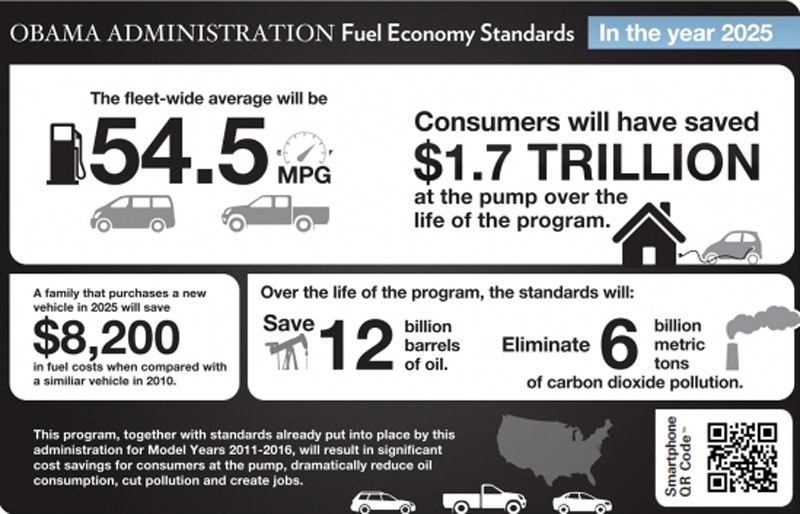As corporate average fuel economy standards continue to tighten each year, car companies have so far kept pace with the rising gas-mileage rules.
But automakers are seeking credit for every possible advancement in new vehicles as they look toward an average goal of 54.5 mpg in 2025 (roughly equivalent to 42 mpg on a new-car window sticker).
DON'T MISS: U.S. Will Meet Fuel-Economy Goals Despite Higher Truck, SUV Sales, EPA Says
Which is why, according to a report last week in The Wall Street Journal, an automaker trade group suggests that they should receive extra fuel-economy credits for building safer cars.
The theory is that as more autonomous-driving features are added to cars, they will be safer and the rate of accidents will fall--reducing congestion, and hence fuel consumption from idling cars caught in traffic.

Driver Assists - lane departure prevention
Features now appearing on increasing numbers of new cars include:
- automatic braking to avoid collisions or reduce the severity of impacts
- adaptive cruise control that maintains a safe distance from a vehicle ahead
- lane-departure warning and correction, which keeps a car from drifting out of its marked lane
ALSO SEE: Auto Industry Doing Fine In Meeting Gas-Mileage Goals, It Turns Out
Such features typically appear first on the most expensive luxury vehicles, then migrate over time into mass-market vehicles as costs fall.
Researchers at the University of California--Riverside project that once such advances are rolled out to the entire U.S. vehicle fleet, gasoline consumption could fall as much as 30 percent.

Ford's Traffic Jam Assist
The Wall Street Journal notes that Mitch Bainwol, who heads the Alliance of Automobile Manufacturers, an industry lobbying group, wants regulators to let carmakers count such fuel-efficiency benefits toward their CAFE goals.
When rules for the second round of CAFE standards were released in 2012, regulators said that safety advances should only be assessed only on their ability to reduce injuries and deaths, not their impact on either fuel economy or emissions.
While the paper says the National Highway Traffic Safety Administration (NHTSA) is open to considering the idea, the Environmental Protection Agency (EPA) seems less sympathetic.

Gas pump
With the addition of carbon dioxide, a greenhouse gas, to the list of regulated vehicle emissions, the two groups have had to harmonize their standards for emissions (EPA) and fuel efficiency (NHTSA).
In the past, fuel-economy credits have been given for technologies like Flex-Fuel capability, which allows a vehicle to run on E85 ethanol as well as conventional E10 gasoline.
MORE: Fuel-Economy Rules Likely To Stay Put Through Midterm Review: Consensus
The very limited and regional availability of ethanol, however, meant that most of those vehicles never burned a drop of E85 even though they were deemed far more fuel-efficient.
That credit is now being phased out.

54.5 MPG CAFE standard for 2025
The upcoming midterm review of the costs and benefits of the 2012-2017 CAFE rules is likely to see a number of such proposals floated.
Most industry analysts, however, feel that the second set of standards for 2018-2025 vehicles, will remain essentially unchanged by the midterm review.
But we can expect more such proposals by automakers seeking every possible way to comply with stiffer CAFE standards at the lowest possible cost.
_________________________________________________












